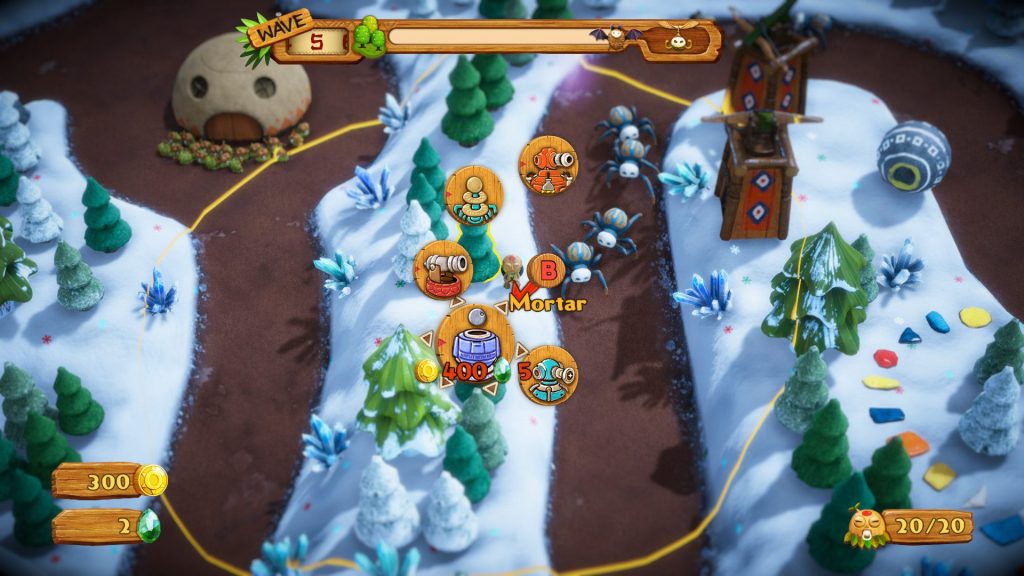The original PixelJunk Monsterswas a quiet hit back in the simpler world of 2008. It was a charming interpretation of tower defense that didn’t reinvent the wheel so much as paint it pretty colors. It would be expanded on through DLC and with a PSP “deluxe” edition a over the next year or two, but there was not much to indicate that we would ever see that series again. A decade later, I am happy that I was wrong.
PixelJunk Monsters 2 is everything its predecessor was ten years ago. In most ways, that is great news. In a select few ways, it’s a bit disappointing.
New Trees
Tower defense fans know the drill: there’s a base with people worth defending and a path that will lead enemies straight to them. Building stationary towers along these paths to fire at passing monsters is the only way to defend the people. We’ve seen versions of this since 1990’s Rampart.
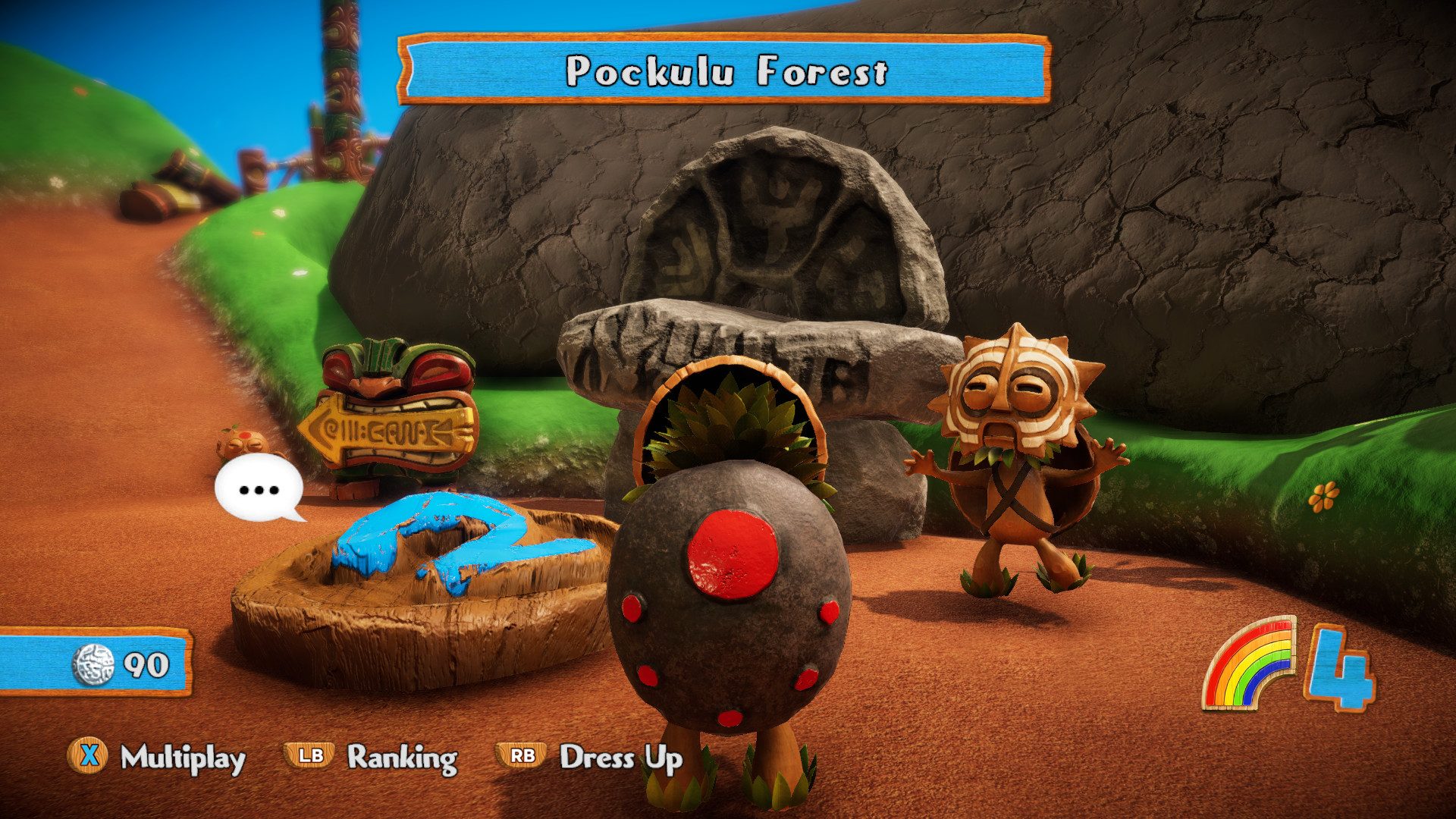
PixelJunk takes that idea and skews it. Literally, in the case of the paths that snake through each map. These elongate the time it takes for monsters to reach your hut full of Chibi tiki children. There are multiple paths that web together towards your hut, and a pre-stage flyover of the map will tell you which path they travel down.
Don’t get too comfortable by that big, blue arrow’s suggestion, though, because it is only just that. Even in the lowest difficulty, monsters will switch up their marching orders mid-stage, choosing new paths to start down. Sometimes, monsters will switch up their movement patterns down paths you’re familiar with them taking a specific way. Other times, they will ignore the path completely, and tromp over the grass, down hills, or over lakes to detour to your precious babies. Monsters are real jerks.
The only way to stop their treachery is to build. Using tiki magic (and gold coins and gems) you can turn the trees in any given stage into a weapon. There are three groups of tower types – ground, air, and both – with a smattering of different types of artillery to choose from.
Towers have their own strengths and weaknesses outside of target restrictions. Arrow Towers have long range, but can only shoot one at a time. Hive Towers are expensive, but they deploy a swarm of bees that patrol an area of your map, stinging all passersby. Learning where to place them, and how to use them in tandem, is a fun and frustrating experience.
Fun, because finding a cool tower combo is an endlessly rewarding experience. Coming back to towers you don’t use, like the Tesla and its low fire rate, high area of effect lighting bolts, and finding its potential unlocked by a tower you unlock, like the Freeze Tower, is where this game truly shines. Watching your layouts operate like a well oiled monster mashing machine is the feel-good hit of the summer.
Frustrating, because you never really know what the next twist or turn is until it happens. A meter at the top of the screen displays the monsters in the wave upcoming, and how much time you have until the next monster wave. But it doesn’t display where those monsters are coming from. Over-building on one area can greatly deter you, but there is a great lack of tactical, in-the-moment options for when this happens. Many times, you’ll tear a tower down and rebuild it somewhere else, just in time for a monster to slip by and kill one of your babies.
You can shake the unbuilt-upon trees for extra gold and gems, but they can also drop special fruit. These act like little bombs that can explode on passing enemies if placed in their path and do various effects. It’s still almost too random to be counted on as a direct and interactive action to take on the field, even though you can spend gems on fruit that you gradually unlock through play. Generally speaking, you’ll spend a lot of time watching the screen patiently, watching your tribesmen dance.
Familiar Fruit
Surviving all the stages with minimal casualties is an easy task on the lowest difficulty. But you need rainbow fragments, pieces of these large stone monuments from each stage, to unlock new worlds. You only get them by passing missions with no casualties. All of these seemingly random monster behaviors, mixed with the lack of direct intervention options can turn later stages into pits of Polynesian-inspired despair. Restarting the mission halfway through because you let one measly spider through after working fast to course correct your tower set up is incredibly annoying.
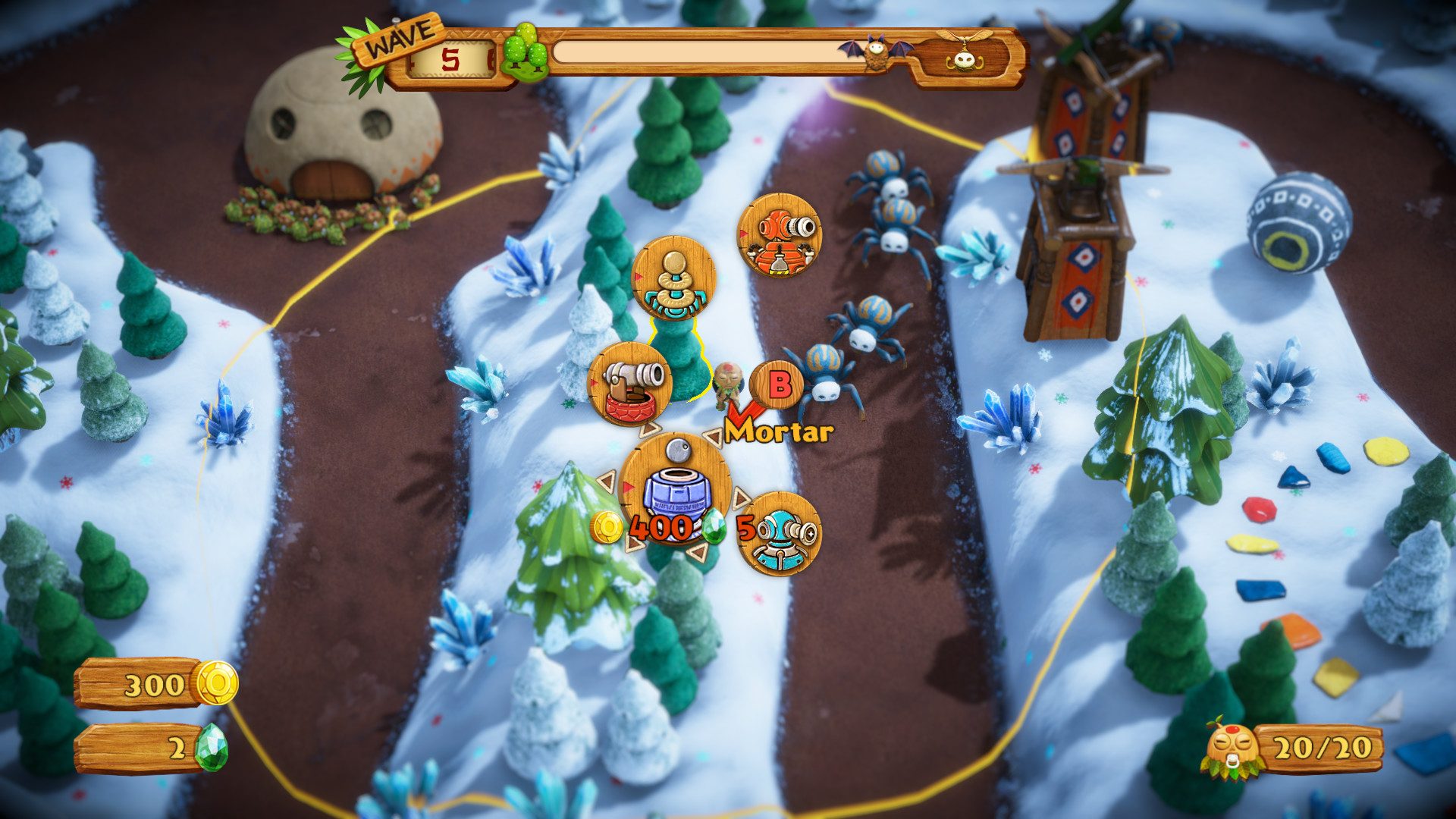
The areas that each map of PixelJunk Monsters 2 cover are also pretty large. Attempting to sprint from one end of an area to another to make last second changes feels tiring before you even get to the tower to upgrade or dismantle it. The 3D environments are rife with obstacles that you can jump over, but the physics can be deceptive. Jumps you think you can make, you’ll miss. Jumps you’ve made before, you’ll struggle to land a second time because your approach was slightly off. Having the geometry there is fun in theory, but in practice it can be a headache.
Some of that can be mitigated in multiplayer, where two players locally and up to four over the Internet can work together to stop the oncoming horde. Communication is key, because you all share the same resources. Though, to a certain limit, your team can spread out and cover wide areas of the map. If you move out of that limit, you will teleport back to Player 1. Playing this game with a friend can mitigate a lot of the strategic slog you’ll feel, as the problem-solving process between you two becomes the interactive missing link.
But man, does it all look so good. It mimics that stop-motion, claymation style so well. The textures of the big fir trees in the wintry stages and the sandy dunes of the desert world are wonderful. And it’s all moving at 60fps, which seems unnecessary for this sort of game, but welcome.
Pixeljunk Monsters 2 does the original great justice by lifting the core experience and spreading it across a big, bright, three-dimensional playing field. But if feels like a typical tower defense game from the 2007-08 boom. It fails to incorporate ideas from genre contemporaries who have moved the mark as far as agency. Games like Dungeon Defenders and Kingdom Rush really opened the doors to the new possibilities in how you design and interact with a tower defense game that Pixeljunk Monsters 2 doesn’t even approach. The series that used to be genre-defining is only just an honorable mention because of it.
PixelJunk Monsters 2 review code provided by Spike Chunsoft. Version 1.00 reviewed on a standard PlayStation 4. For more information on scoring please see our Review Policy here.
-
Solid strategic premise
-
Absolutely gorgeous
-
Great multiplayer
-
Clunky running and jumping physics
-
Very few new ideas
PixelJunk Monsters 2 Review
-
Stage Screen
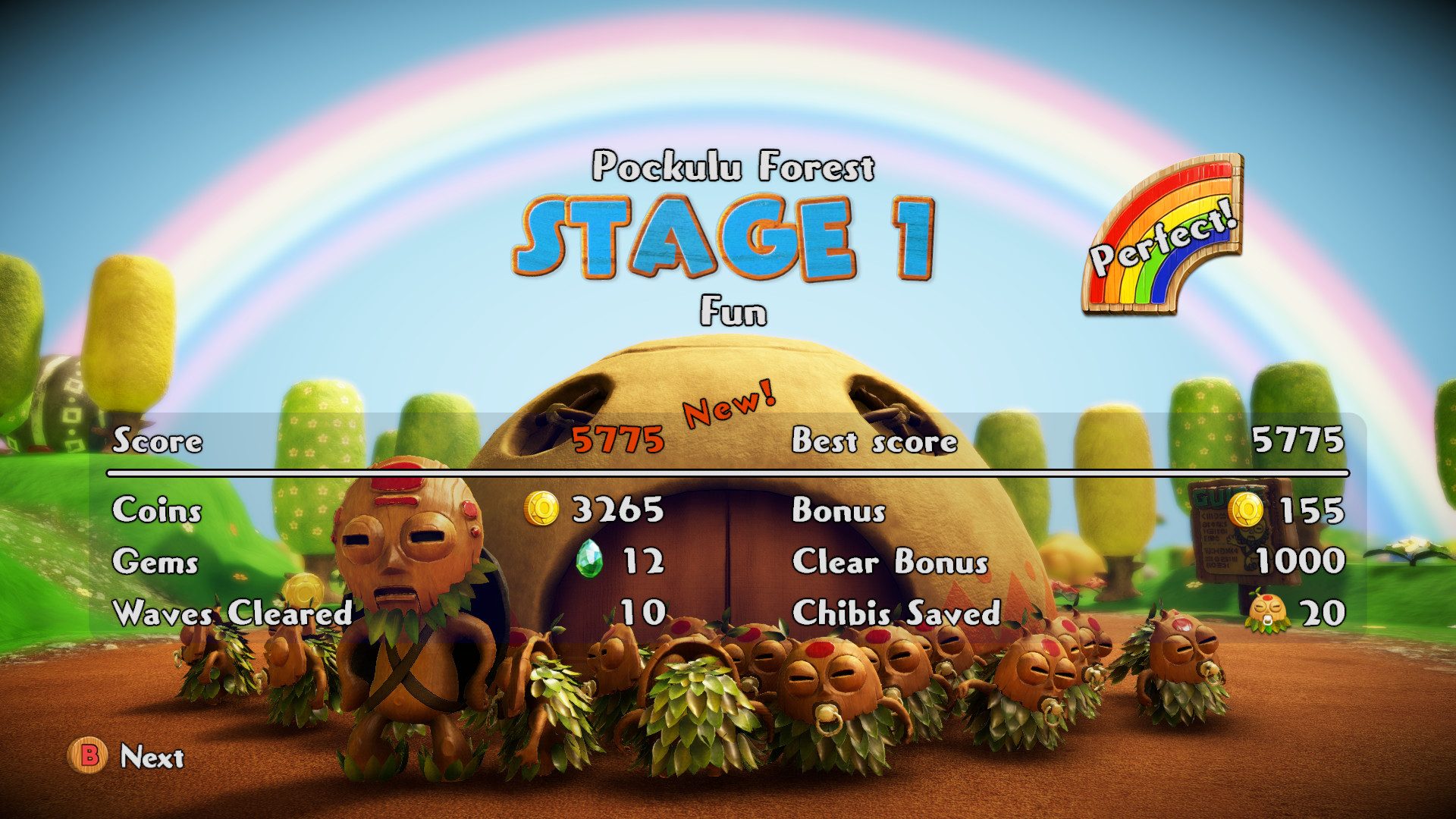
Brightly colored stage screen, complete with scoreboard.
-
Leaderboards
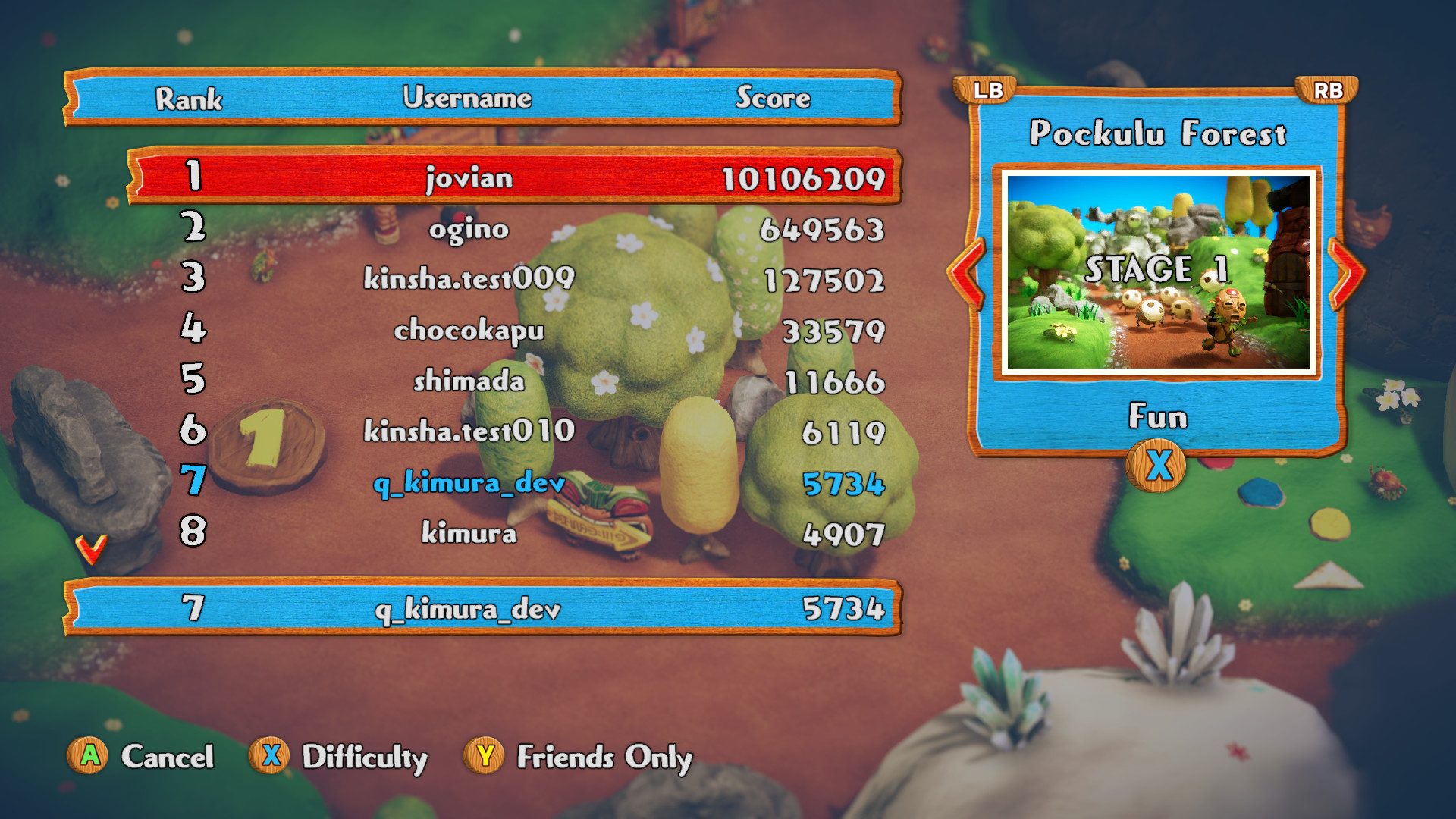
Keep up with your friend's (and the world's) best scores.
-
Stylin'
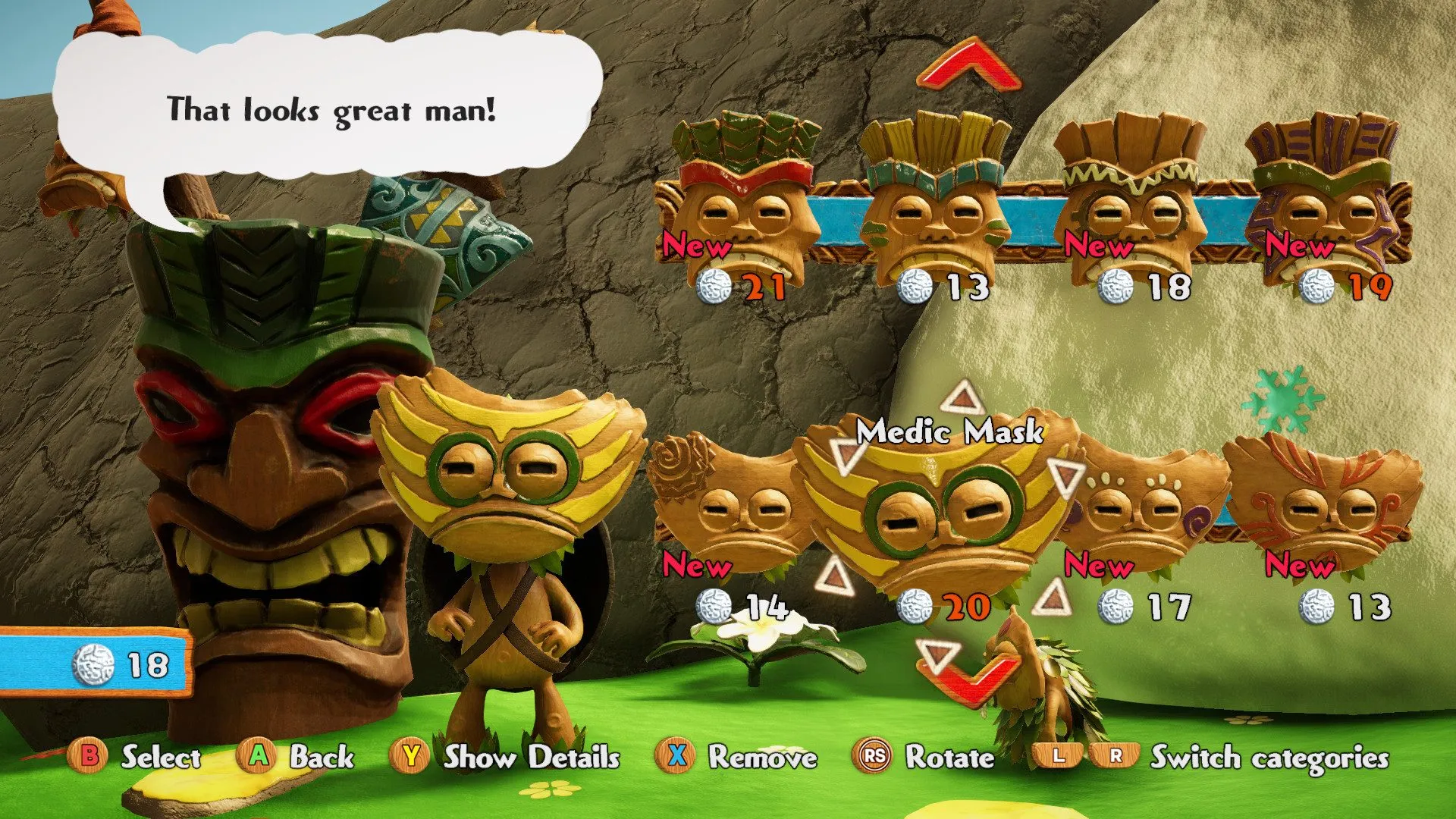
A plethora of masks and shells can be bought to customize your tribeman.
-
Snow Defense
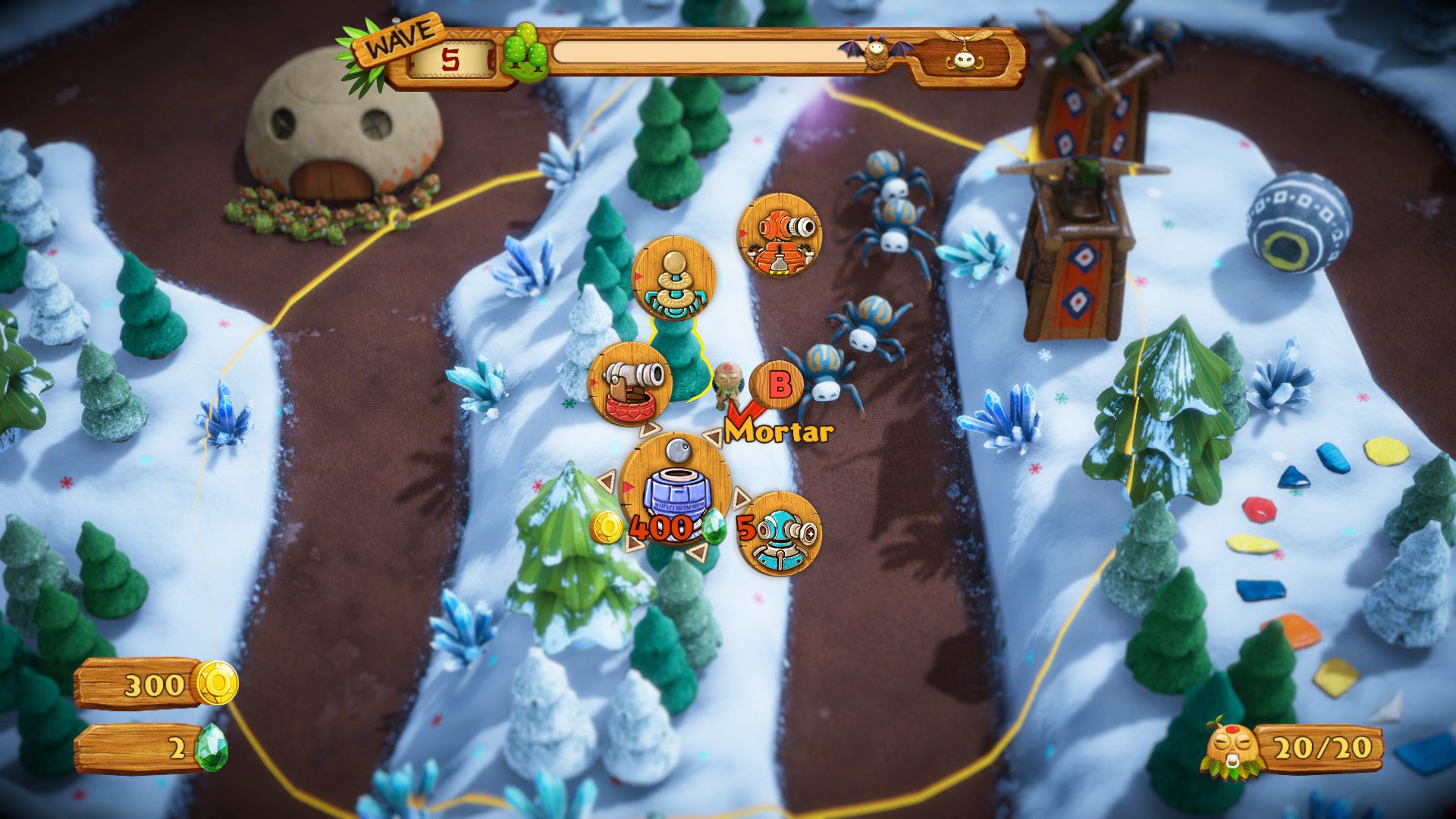
Defend your chibi's, no matter the climate.
-
Fruit Shop
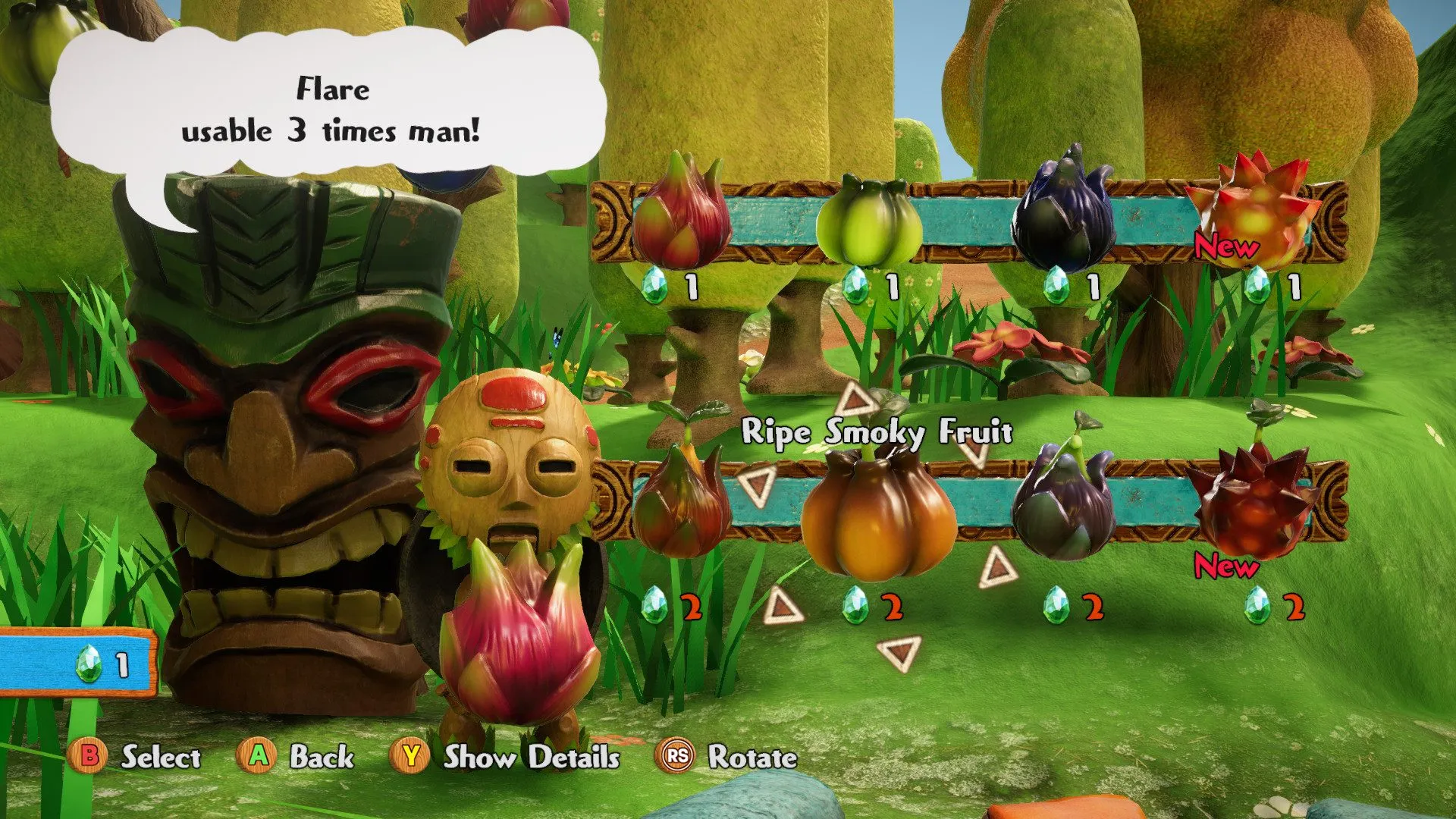
You can spend gems on special fruit during stages.
-
Cinematic View
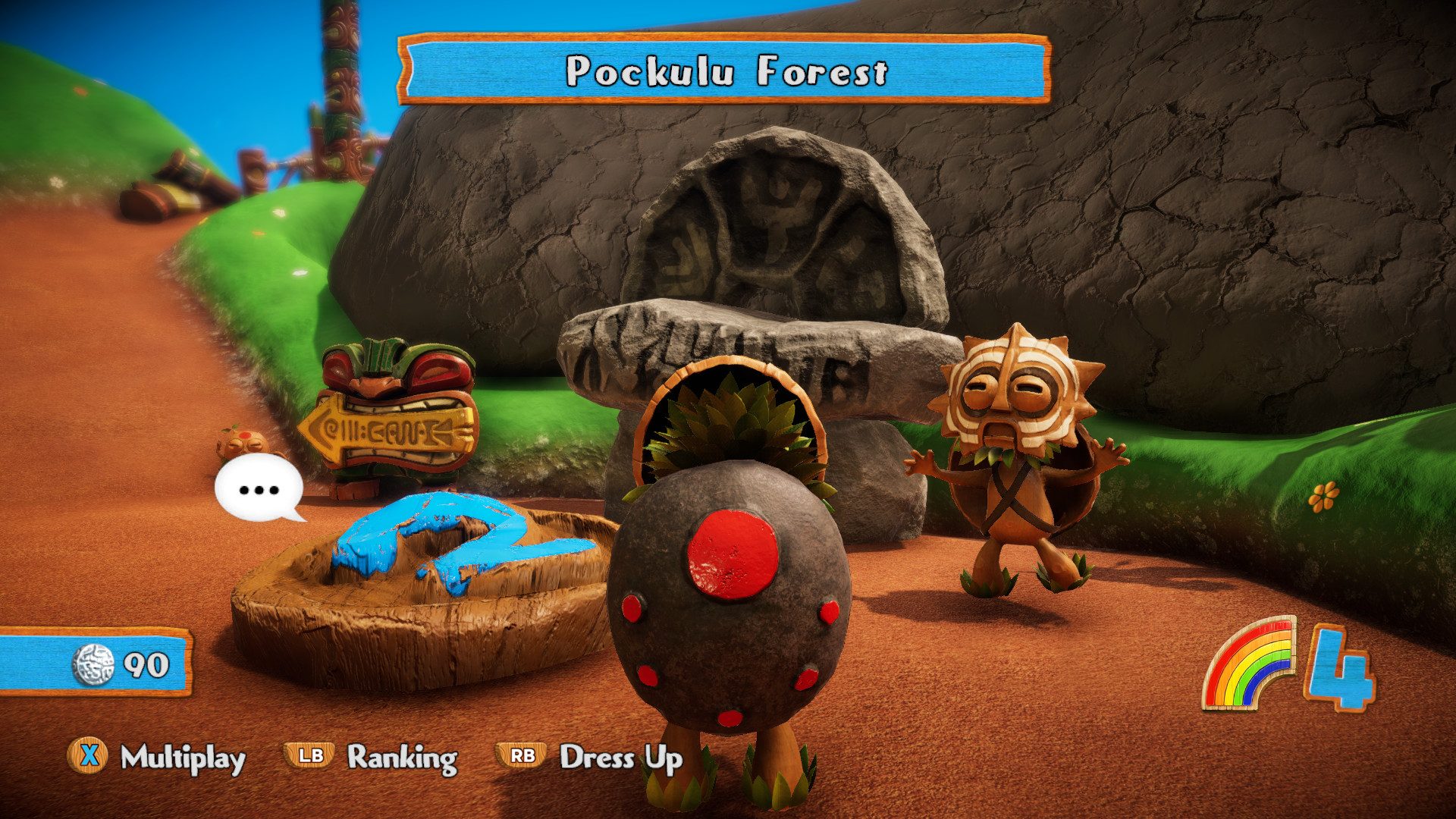
In single player, you can move the camera in super close to get in all the detail.
-
Party Mode
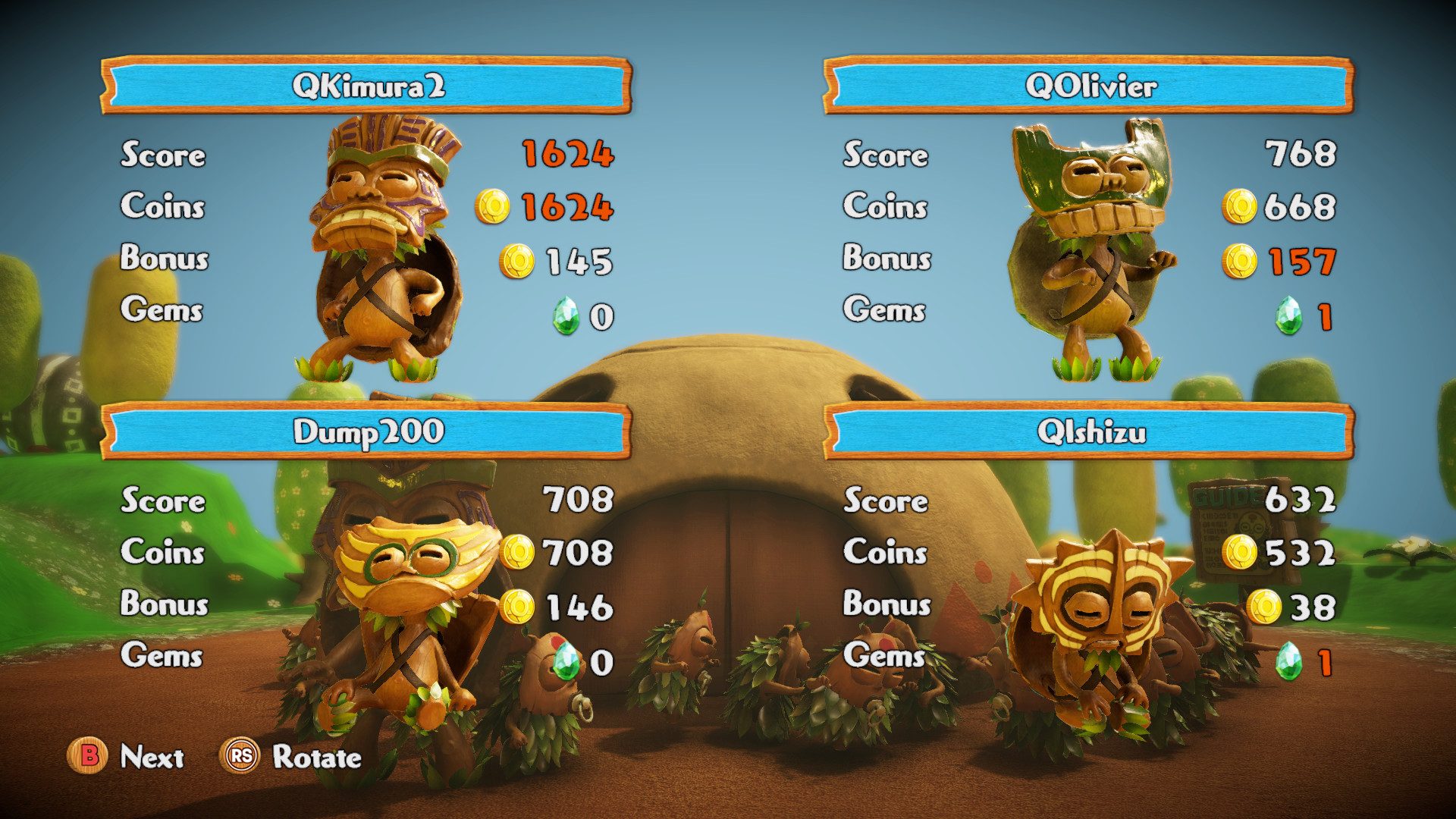
Up to four players can help keep the clan alive.
